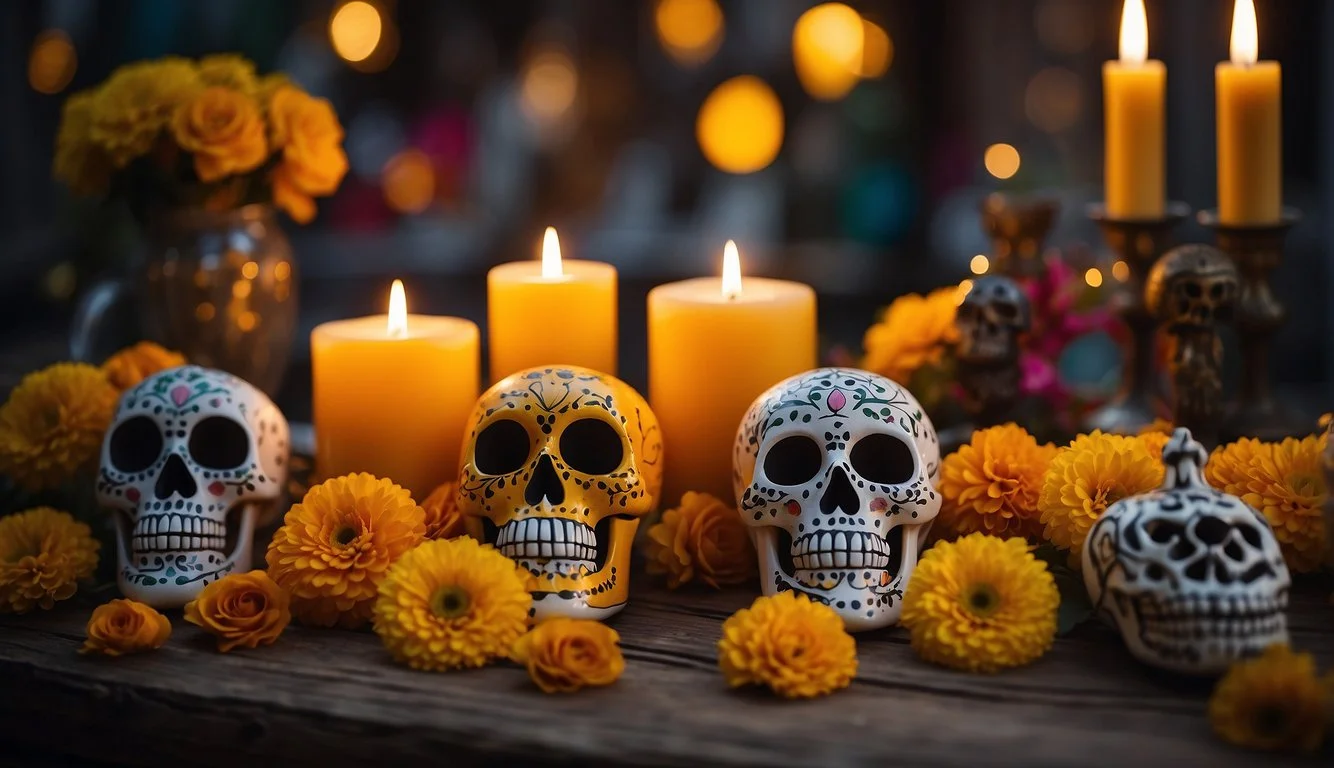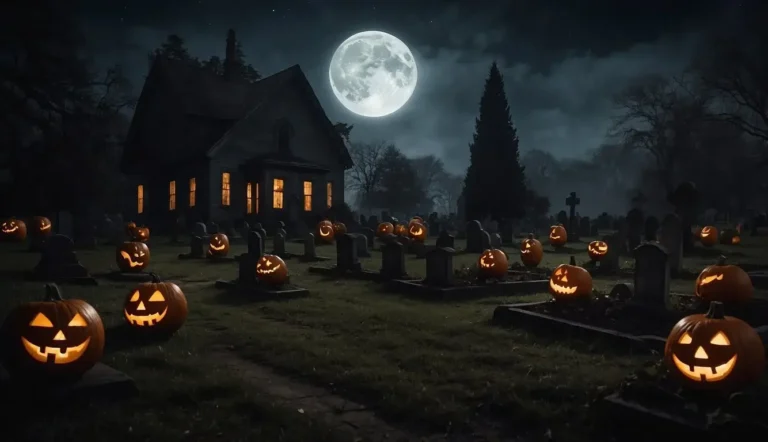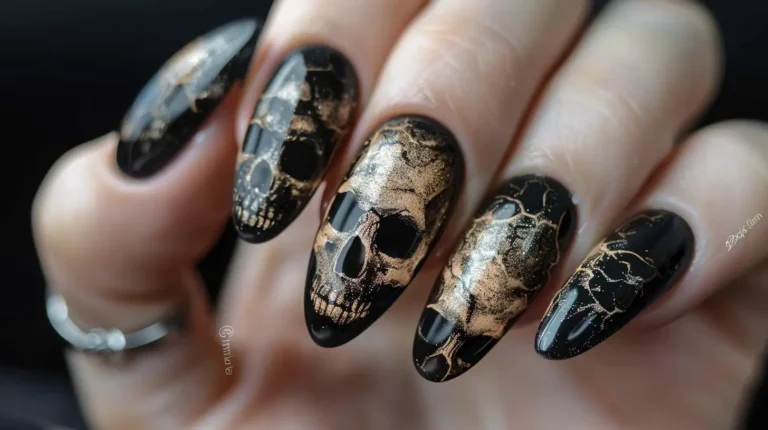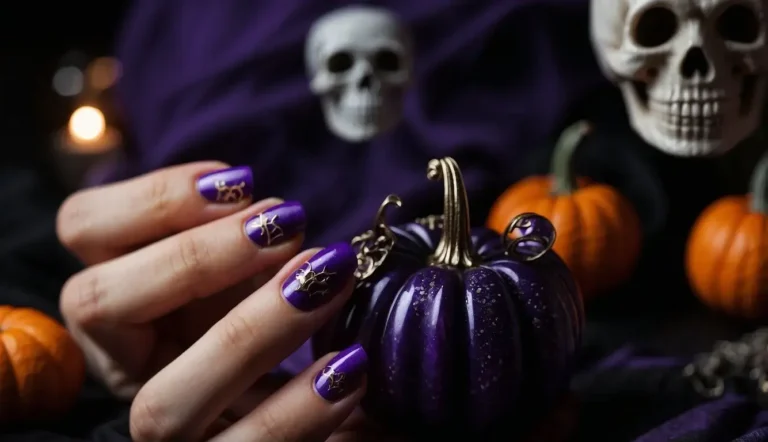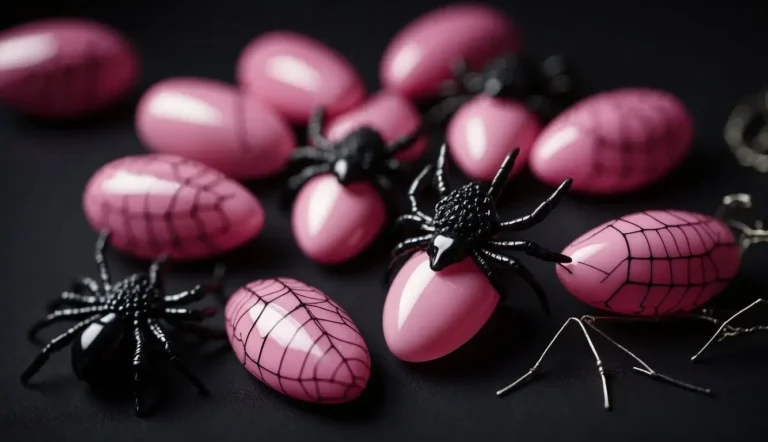Explore the vibrant celebration of Halloween in Mexico with this concise overview, meticulously crafted from in-depth investigations to grasp the core essence of this dynamic tradition. It’s my utmost delight to unveil the unique blend of Halloween festivities and the profound cultural meaning behind Día de los Muertos, highlighting a festival that combines modern customs with ancient traditions.
Key Takeaways
- Mexico’s Halloween blends international customs with local traditions.
- The Day of the Dead holds cultural significance distinct from Halloween.
- Celebrations include family remembrances, public festivals, and symbolic decorations.
The Intersection of Halloween and Día de Muertos
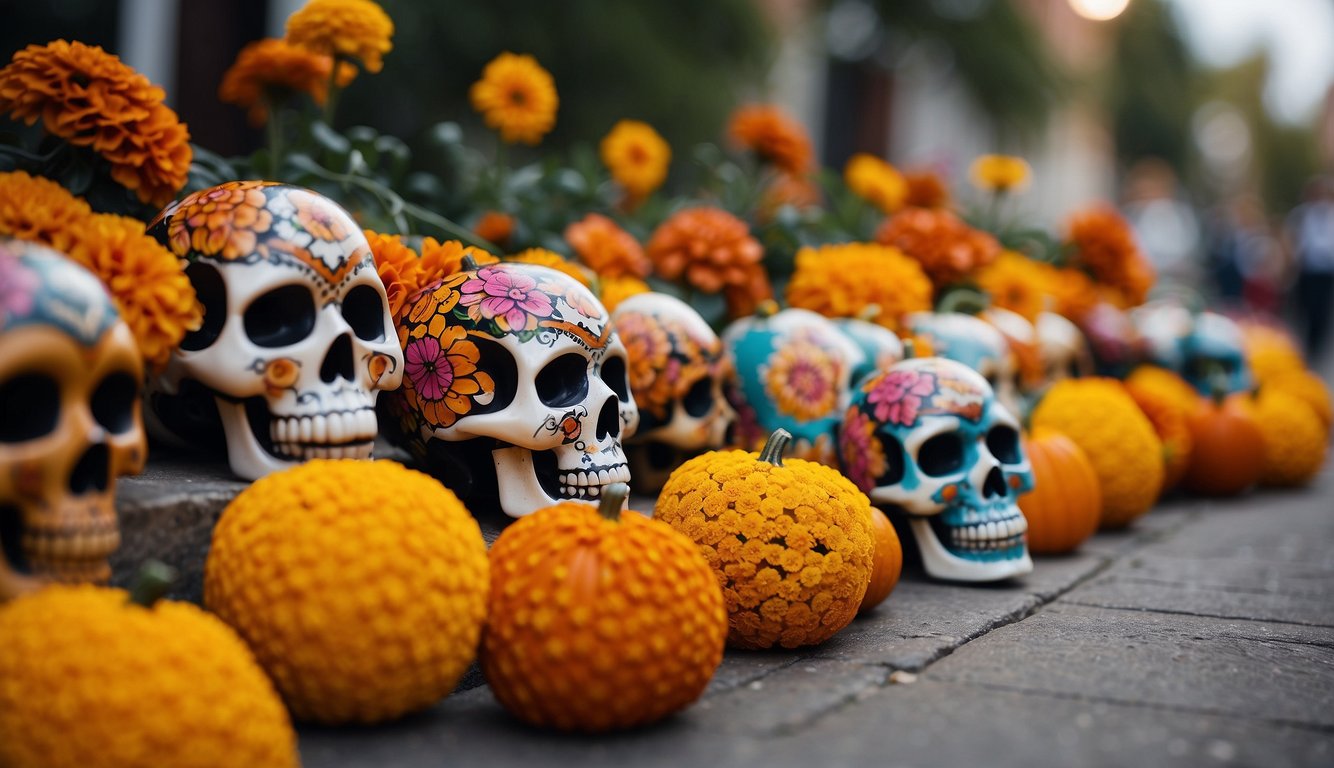
As we explore how Mexico celebrates Halloween, it’s essential to recognize the blending of modern influences with ancient customs, particularly the twining of Halloween with Día de Muertos—two holidays with unique significance that have come to intersect in fascinating ways.
Origins and Cultural Significance
I’ve always been captivated by the rich histories of celebrations, and nowhere is this more poignant than in the comparison of Halloween and Día de los Muertos. Halloween, with its roots in the ancient Celtic festival of Samhain, has a history intertwined with the notion of the supernatural and the idea that the boundary between this world and the next can be crossed. Conversely, Día de los Muertos originates from pre-Hispanic civilizations like the Aztecs, who held a cyclical view of the universe and celebrated death as a natural phase in life’s long continuum.
In modern Mexico, these two have melded to form a cultural mosaic; a blend visible in the shared use of costumes and symbolic representations of death. However, the Mexican traditions remain distinctive, focusing on honoring the deceased with altars and ofrendas—offerings such as photographs, favorite foods, and personal items of the departed.
November 1 and November 2 are especially significant, as they mark days dedicated to remembering children and adults who have passed, coinciding with All Saints’ and All Souls’ Day in the Roman Catholic belief system.
Current Celebrations and Practices
In Mexico today, I find the influence of United States customs on Halloween to be most visible in urban areas, where trick-or-treating and pumpkin carving have gained popularity. The celebrations manage to exist side by side, with Halloween elements appearing as playful additions to the deeply spiritual nature of Día de los Muertos. The traditional Mexican elements are unmistakable.
Families construct beautiful altars adorned with marigolds and candles to guide the spirits home, and public spaces often host art installations and parades reflecting the day’s solemn yet joyous atmosphere. This synthesis of traditions exemplifies how cultural elements can traverse borders, with Mexicans in the United States often holding their own Día de los Muertos observances, thus enriching the cultural fabric of their communities.
What’s apparent is the harmonious coexistence of the secular and sacred amidst these autumnal celebrations, highlighting a reverence for the past as we continue to embrace the evolving nature of cultural expressions.
Symbols and Customs
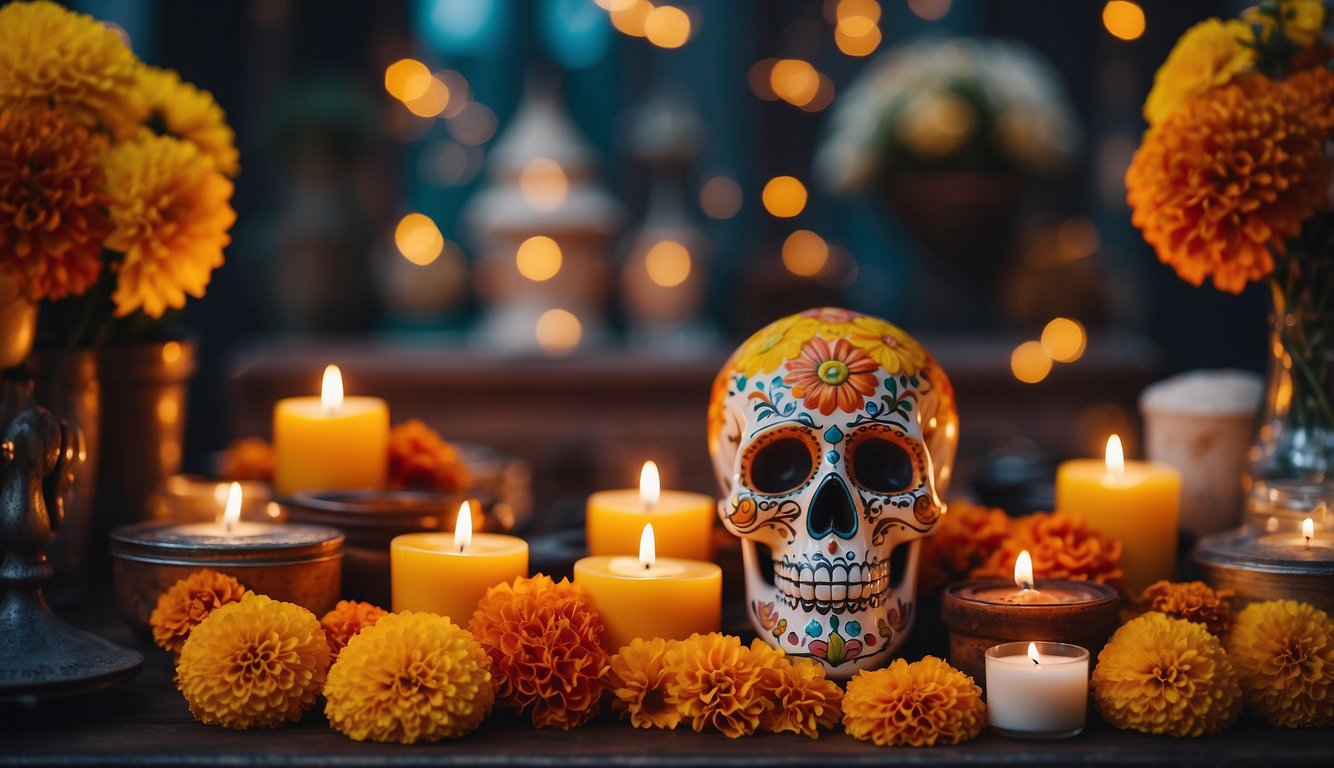
In my exploration of Halloween celebrations in Mexico, I’ve found a vibrant fusion of traditional elements with contemporary influences. From eye-catching decorations to special food, Mexican Halloween has its unique customs.
Iconic Imagery and Decorations
Mexican Halloween brims with skulls and skeletons, often represented in a whimsical style. The streets come alive with colorful costumes and altars, each bearing its own significance. Altars adorned with marigolds, candles, and sugar skulls are heartwarming memories of loved ones passed. With her elegant attire and skull-like face, the iconic La Catrina stands as a symbol of the festivities.
Film has also left its imprint, notably Disney Pixar’s ‘Coco’, bringing a slice of these traditions to the global stage. Not to forget the touch of Hollywood glamour, with scenes from Spectre, featuring James Bond amid a fictional Day of the Dead parade, shining a light on Mexico’s rich cultural tapestry.
Food and Offerings
Relishing in the season’s tastes, families prepare pan de muerto, a sweet bread that melts in your mouth, often placed on altars as an offering. The spirits are welcomed with their favorite foods, creating a spiritual bond through culinary tradition. Beyond the sweetly decorated sugar skulls, actual food represents a shared experience with the ancestors, awakening the senses and celebrating life.
Public Festivities and Events
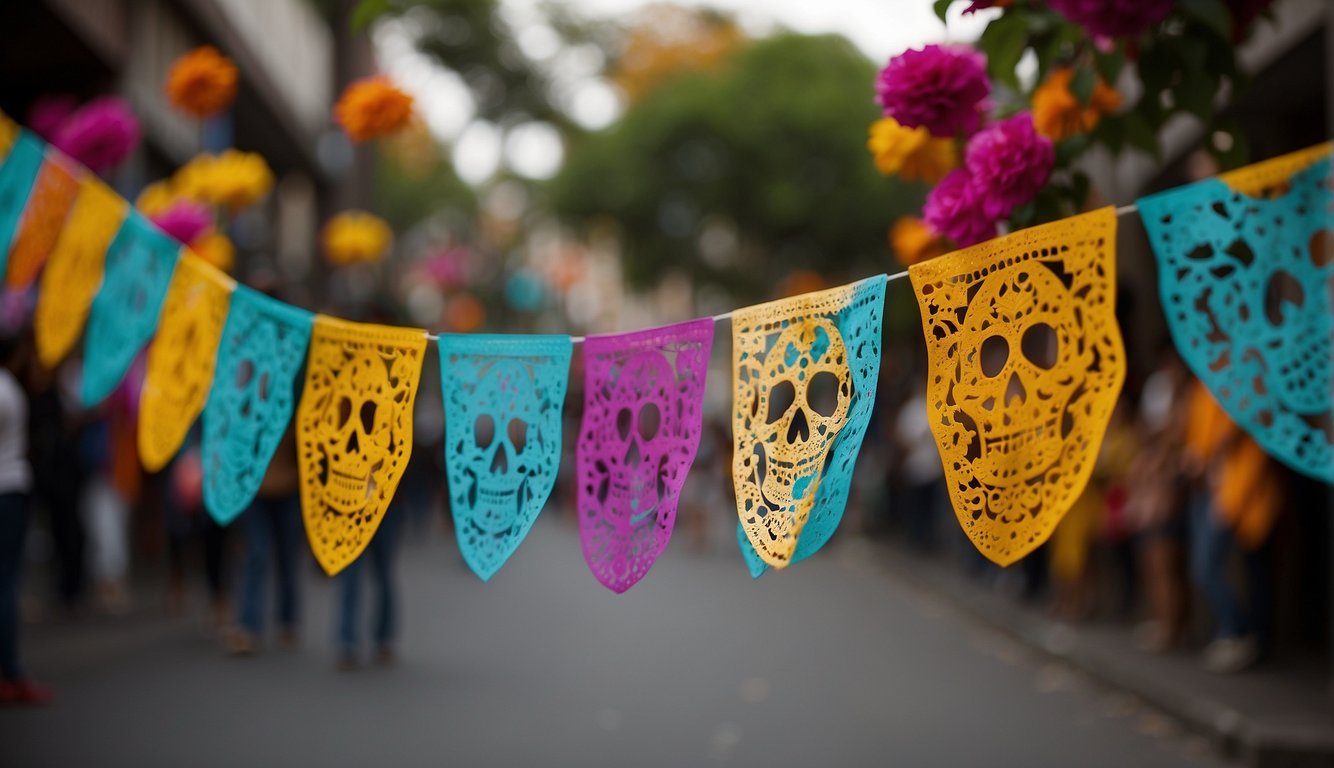
In the vibrant streets of Mexico, Halloween mingles with the traditional El Día de los Muertos, providing a festive atmosphere with music and parades that I find absolutely invigorating.
Parades and Public Events
As I stroll through Mexico City during Halloween, the parades are a feast for the senses. The streets come alive with colorful floats, skeleton costumes, and the rhythmic pulse of music and dancing. This public spectacle blends the spooky and the spiritual with echoes of Jose Guadalupe Posada’s emblematic figure, La Calavera Catrina, often seen parading down the avenues. Tourists and locals alike gather to watch performers and floats representing the opening of the gates of heaven, a concept deeply interwoven with the following Day of the Dead celebrations.
Family and Community Traditions
Within the communities, Halloween or ‘Día de las Brujas’ is more than just dressing up. It’s about family members feasting and sharing stories. In some neighborhoods, children chant “Queremos Halloween!” instead of the traditional “trick or treat,” while visiting homes under the evening sky. I find families honor both the light-hearted spirit of Halloween and the profound depth of El Día de los Muertos, often adorning cemeteries and home altars to welcome the souls of the deceased, creating a unique intertwining of two cultures’ ways of honoring the dead.
FAQ – How Does Mexico Celebrate Halloween?
Is Halloween widely celebrated in Mexico?
While not a traditional Mexican holiday, Halloween has become increasingly popular, especially in cities and among younger generations. It’s often seen as a fun, commercial event separate from the deeply cultural Día de los Muertos.
How do Mexicans celebrate Halloween?
Celebrations can include costume parties, especially for children, who may also go trick-or-treating (“pedir Halloween”) in their neighborhoods or local malls. Some homes and public spaces may display Halloween decorations like jack-o’-lanterns and cobwebs.
What traditional activities occur around the same time as Halloween in Mexico?
The Day of the Dead is a significant Mexican tradition occurring from October 31st to November 2nd, where families honor deceased loved ones. It involves creating altars (“ofrendas”) with photos, candles, “pan de muerto” (bread of the dead), sugar skulls, and marigolds.
If you enjoyed reading about How Does Mexico Celebrate Halloween?, check out our other articles:
- Costumes Halloween Essentials 2024: Choosing the Perfect Outfit
- Scary Adult Halloween Costumes 2024: Unleash Your Frightening Side!
- Addams Family Halloween Costumes 2024: Inspiration for Your Spooky Ensemble
- Mom and Daughter Halloween Costume Ideas for a Spooktacular Duo 2024
- Halloween Animals 2024: Furry & Feathery Friends of the Spooky Season
Feel free to also check out our other Articles from the category “Community Events“ and don’t forget to follow us on Pinterest.

